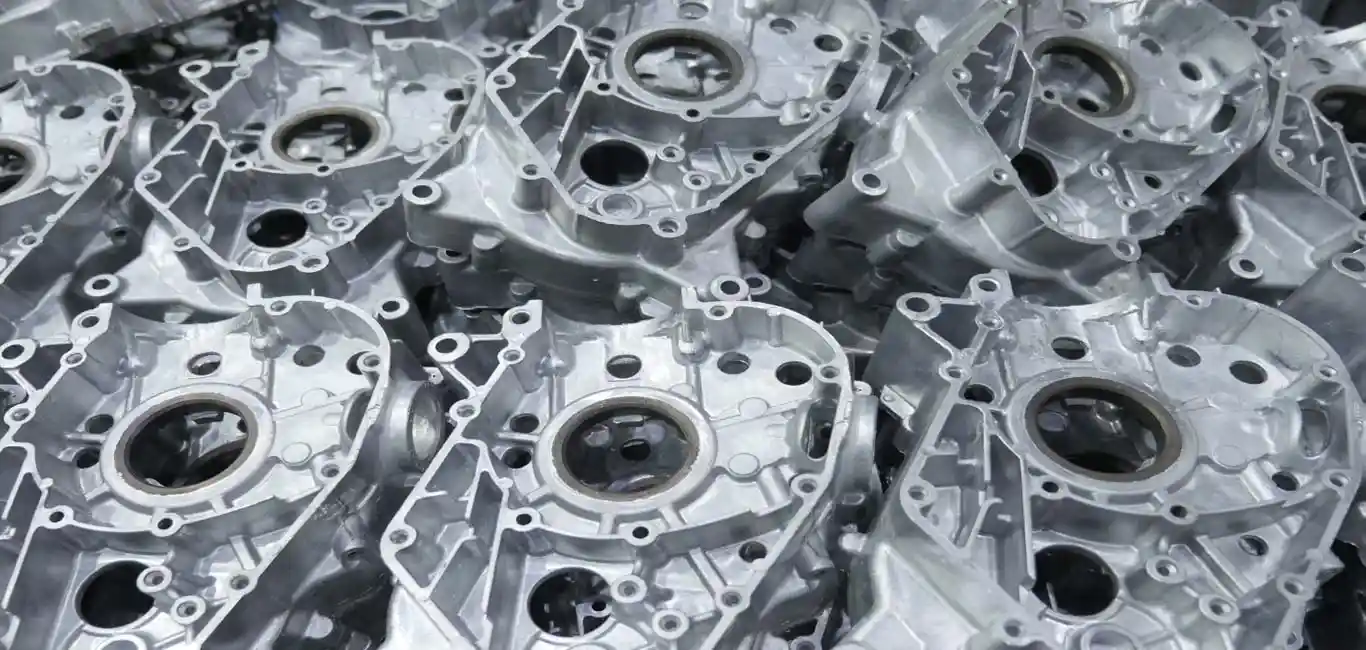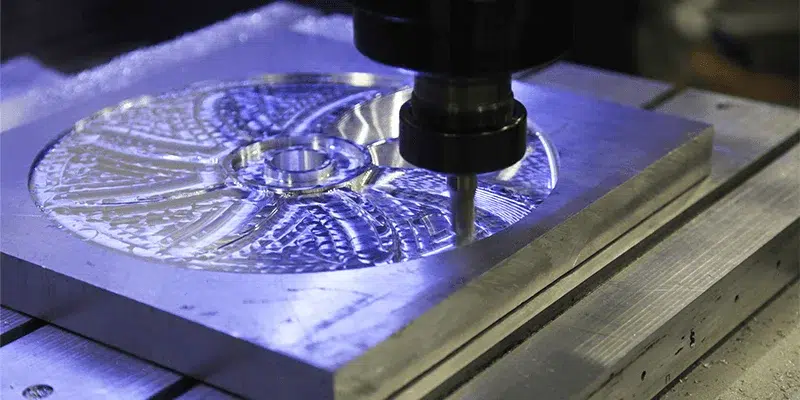The Future of Production With a Next-Gen Aluminum Casting Manufacturer
Wiki Article
A Deep Dive Into the Aluminum Casting Process: From Style to Finished Item
The light weight aluminum Casting procedure incorporates several important phases, each requiring precision and knowledge. It begins with the style phase, where concepts evolve right into thorough requirements. The prep work of molds follows, utilizing numerous casting techniques. After melting and putting, the cooling stage identifies the final homes of the aluminum. The trip doesn't finish there; finishing procedures play a considerable duty in accomplishing quality requirements. What happens following in this elaborate procedure?Understanding Light Weight Aluminum Casting
Light weight aluminum Casting is a vital process in producing that involves putting liquified aluminum right into a mold to develop different forms and components. This technique is favored for its capability to produce complex layouts with outstanding dimensional precision. The procedure begins with choosing top quality light weight aluminum alloys, which are after that thawed at raised temperature levels. As soon as in a fluid state, the aluminum is carefully poured right into mold and mildews, which can be made from sand, metal, or other products, relying on the desired last item.Air conditioning occurs as the molten light weight aluminum strengthens, forming the desired shape. After cooling down, the spreadings are removed from the molds and go through ending up procedures such as machining or surface treatment to improve their residential or commercial properties and look. Recognizing light weight aluminum Casting not just highlights its significance in engineering and manufacturing yet additionally stresses its flexibility in creating lightweight, sturdy parts for various industries, including automobile, aerospace, and durable goods.
The Design Process: From Idea to CAD
The style process for light weight aluminum Casting starts with initial concept development, where concepts are changed right into substantial requirements. Following this phase, CAD modeling methods are utilized to produce accurate digital representations of the designs. This shift from principle to CAD is important for guaranteeing precision and expediency in the Casting process.Preliminary Idea Advancement
Launching the layout procedure for light weight aluminum Casting entails changing abstract ideas into tangible concepts. This phase is fundamental, as it lays the groundwork for successful item growth. Developers team up with stakeholders and designers to specify the useful demands and visual aspects of the casting. Brainstorming sessions typically produce multiple ideas, which are after that reviewed for manufacturability, cost-effectiveness, and usefulness. Illustrations and initial versions might be created to imagine potential layouts. Feedback from group members and customers is essential in improving these concepts. Repetitive discussions aid to determine potential difficulties, guaranteeing that the last design straightens with both technical specs and user requirements. Ultimately, this phase establishes the stage for the change from concept to more detailed digital depictions.CAD Modeling Techniques
As the design procedure changes from initial ideas to detailed representations, CAD modeling strategies become necessary tools for engineers and developers. These methods enable the creation of exact, scalable electronic models that precisely mirror the intended physical product. Usual methods include 3D solid modeling, surface area modeling, and parametric design, each offering distinct capabilities for different job demands. Designers utilize software application like AutoCAD, SolidWorks, and CATIA to fine-tune layouts, simulate performance, and identify prospective problems prior to manufacturing. The assimilation of CAD with other technologies, such as finite aspect evaluation (FEA), boosts the layout procedure further by anticipating material habits under anxiety. Inevitably, reliable CAD modeling streamlines communication among staff member and boosts the total efficiency of the aluminum Casting process.Preparing the Mold: Sand, Die, and Investment Casting
When preparing mold and mildews for light weight aluminum spreading, the selection of approach significantly influences the final item's top quality and accuracy. 3 key strategies are commonly used: sand casting, die casting, and investment casting.Sand Casting involves creating a mold from sand, which is affordable and functional, making it suitable for large components and complex geometries. This method, nonetheless, might produce a rougher surface coating compared to various other strategies.
Die casting employs steel molds, enabling high-volume manufacturing and exceptional dimensional accuracy. This approach is ideal for generating elaborate designs with limited tolerances and smooth surface areas but calls for higher ahead of time expenses due to mold and mildew fabrication.
Financial investment casting, additionally understood as lost-wax spreading, offers extraordinary precision and surface area coating, making it appropriate for intricate elements. This approach includes developing a wax pattern, which is coated in ceramic, enabling fine information during the Casting procedure. Each method has its benefits, affecting the spreading's applications and characteristics.
Thawing and Putting Light weight aluminum: Methods and Tools
In the aluminum Casting procedure, effective melting and putting techniques are essential for accomplishing top quality outcomes. Numerous melting techniques and specialized putting equipment play a considerable duty in making sure ideal fluidity and temperature level control - Aluminum Casting Manufacturer. Recognizing these essentials is important for both amateur and skilled factory expertsThawing Strategies Summary
A range of melting methods are used in the light weight aluminum Casting process, each tailored to certain applications and manufacturing ranges. Common techniques include crucible melting, where light weight aluminum is heated in a ceramic or metal container, commonly ideal for small batches. Induction melting uses electro-magnetic areas to warmth light weight aluminum promptly and successfully, ideal for larger production requirements. Electric arc heaters provide a high-temperature atmosphere, making them appropriate for reusing light weight aluminum scrap. Additionally, rotary heaters use a constant melting process, enhancing performance. Each strategy has its benefits, such as energy effectiveness, melting speed, and material quality, guaranteeing that producers can choose the most appropriate approach based upon their functional requirements and desired outcomes in the Casting procedure.Putting Equipment Essentials
Following the melting procedure, efficient putting tools plays a substantial function in guaranteeing the effective transfer of liquified aluminum right into molds. Key elements include ladles, putting cups, and automated putting makers. Ladles, usually made of heat-resistant products, are designed to hold and move molten light weight aluminum safely. Pouring cups enhance control throughout the transfer, facilitating a consistent pour to lessen turbulence and oxidation. Automated pouring equipments are progressively preferred, guaranteeing regular flow rates and lowering human error. These equipments can be programmed for why not try here accuracy, optimizing casting high quality. In addition, temperature surveillance devices are important to ensure the liquified aluminum remains within the suitable temperature array, additional enhancing the top quality of the last actors product. Proper option and upkeep of pouring equipment are crucial for effectiveness and security.

Cooling and Solidification: Changing Fluid to Solid
Cooling and solidification play an essential function in the aluminum Casting process, as they establish the final homes of the actors steel. After putting, the molten light weight aluminum starts to lose warm, moving from liquid to solid. This cooling phase is essential, as it affects mechanical buildings such as ductility, microstructure, and stamina. The price of air conditioning can differ based upon aspects such as mold material, thickness, and environmental problems. Quick air conditioning may cause a finer grain framework, enhancing stamina, while slower cooling can cause coarser grains, affecting ductility.In addition, consistent cooling is critical to stop problems such as warping or fracturing. As the metal strengthens, the formation of dendrites occurs, which are tree-like structures that affect the total stability of the spreading. Understanding the cooling and solidification characteristics permits engineers and factory employees to optimize the process, making sure that the end product satisfies the essential specifications and high quality requirements.

Ending Up Procedures: Machining, Finishing, and Evaluation
Finishing procedures are vital in refining aluminum spreadings to fulfill stringent specifications and enhance efficiency. These procedures normally consist of finishing, machining, and inspection, each playing an essential function in attaining the preferred top quality.Machining includes getting rid of excess material from the Casting to acquire accurate measurements and surface coatings. Methods such as milling, transforming, and grinding are commonly utilized to guarantee that the end product meets layout Click This Link tolerances.
Finishing offers to safeguard the light weight aluminum surface area from environmental aspects, boosting corrosion resistance and visual allure. Options include anodizing, powder layer, and paint, each offering distinctive benefits depending on the application.
Inspection is essential to validate that the finished castings satisfy top quality criteria. Methods such as visual assessment, dimensional checks, and non-destructive screening are used to detect any type of flaws. With each other, these ending up procedures guarantee that aluminum castings are reputable, long lasting, and all set for their desired applications.
Applications of Light Weight Aluminum Castings in Various Industries

Additionally, the durable goods industry includes aluminum castings in items like cookware and home appliances, profiting from their thermal conductivity and sturdiness. The building and construction sector employs aluminum castings in window frameworks, doors, and attractive components, improving appearances while preserving performance. In addition, the aquatic sector depends on light weight aluminum castings for boat parts, where resistance to saltwater corrosion is important. In general, aluminum castings supply cutting-edge remedies throughout numerous applications, making them crucial in modern-day production procedures.
Regularly Asked Inquiries
What Are the Ecological Influences of Light Weight Aluminum Spreading?
The ecological effects of aluminum Casting include energy-intensive production, greenhouse gas emissions, and prospective water contamination. Additionally, mining bauxite for aluminum adds to habitat damage, while recycling efforts can alleviate some adverse effects.Exactly How Does Light Weight Aluminum Casting Compare to Various Other Steel Casting Procedures?
Light weight aluminum casting generally supplies advantages like lightweight buildings and rust resistance contrasted to various other metal Casting procedures. Nonetheless, it might have limitations in strength and temperature resistance, making its suitability based on particular application requirements.What Safety Preventative Measures Are Essential Throughout Light Weight Aluminum Spreading?
Throughout light weight aluminum casting, safety precautions consist of putting on safety gear, guaranteeing appropriate ventilation, maintaining tools, and adhering to stringent protocols to deal with liquified steel. These procedures aim to reduce threats such as burns, breathing of fumes, and equipment breakdowns.Can Aluminum Castings Be Recycled After Use?
Aluminum spreadings can undoubtedly be recycled after use. The reusing procedure keeps the material's homes, making it a sustainable alternative. This method significantly reduces waste and saves power, promoting environmental duty in manufacturing markets.What Prevail Defects in Aluminum Castings and Their Reasons?
Usual defects in aluminum spreadings include porosity, cool shuts, and shrinkage - Aluminum Casting Manufacturer. These problems usually occur from insufficient melting temperature levels, inappropriate mold design, and inadequate air conditioning prices, influencing the total quality and performance of the end productAluminum Casting is Web Site an important procedure in making that involves pouring molten aluminum right into a mold and mildew to develop numerous forms and parts. The layout procedure for light weight aluminum Casting starts with first principle growth, where concepts are changed right into substantial requirements. Launching the layout procedure for light weight aluminum Casting includes changing abstract ideas into tangible concepts. In the aluminum Casting procedure, reliable melting and putting methods are important for attaining high-grade outcomes. A range of melting methods are used in the light weight aluminum Casting process, each customized to details applications and production ranges.
Report this wiki page